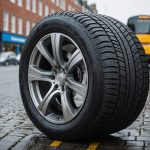Navigating the car market for teen drivers in the UK can feel overwhelming, especially with safety at the forefront of parents' concerns. This guide offers practical insights and tips on selecting vehicles that balance affordability, reliability, and top safety ratings. By understanding key features and options, parents can empower their teens to drive responsibly while ensuring peace of mind on the road. Discover how to make informed choices that prioritize safety without sacrificing enjoyment.
Understanding Safety Ratings for Teen Drivers
Navigating the world of safety ratings can be daunting, especially for parents of teen drivers. In the UK, these ratings are crucial in determining how well a vehicle can protect its occupants. The Euro NCAP is a prominent body providing these assessments, focusing on various aspects like adult and child occupant protection, pedestrian safety, and safety assist technologies.
In parallel : Top All-Season Tyres for Navigating the Varied Weather of the UK: A Comprehensive Guide
For teen drivers, understanding these ratings is essential. The Euro NCAP evaluates vehicles on a scale of one to five stars, with five stars indicating the highest level of safety. This system allows parents and teens to make informed decisions about which vehicles offer the best protection.
When comparing safety ratings among popular car models, it's important to note that not all vehicles are created equal. Some models excel in specific areas, such as crash avoidance technologies, while others may offer superior protection in the event of a collision.
Topic to read : Explore your car rental options in st barts today!
For instance, a model with advanced driver assistance systems might score higher in UK car safety tests, making it a preferable choice for a young, inexperienced driver. By prioritising safety ratings, families can ensure their teen drivers are equipped with the safest options available on the market.
Essential Safety Features in Cars for Teen Drivers
When it comes to teen driver vehicles, selecting the right safety features is paramount. These features not only enhance protection but also build confidence for young drivers.
Key Safety Features to Look For
Modern car technology has revolutionised vehicle safety. Key features include:
- Anti-lock Braking System (ABS): Prevents wheel lockup during braking, ensuring the driver maintains steering control.
- Electronic Stability Control (ESC): Helps maintain vehicle stability by detecting and reducing loss of traction.
- Airbags: Provide a cushioning effect during collisions, reducing injury risk.
Importance of Modern Technology
Incorporating modern technology in teen driver vehicles is crucial. Systems like ABS and ESC are standard in many cars, providing essential support during critical driving situations. These technologies work seamlessly to prevent accidents by enhancing vehicle control and responsiveness.
Role of Advanced Driver Assistance Systems (ADAS)
Advanced driver assistance systems (ADAS) play a significant role in enhancing safety. Features such as lane departure warning and automatic emergency braking alert the driver to potential hazards, allowing for timely corrective actions. These systems are especially beneficial for inexperienced drivers, offering an additional layer of protection.
Budget Considerations When Choosing a Safe Car
When selecting a vehicle for a teen driver, balancing safety with a sensible car budget is crucial. Understanding the total cost of ownership is key to making an informed decision.
Assessing Total Cost of Ownership
Beyond the initial purchase price, consider ongoing expenses such as insurance, maintenance, and fuel. Insurance costs for teen drivers can be high, so opting for models with strong safety ratings may reduce premiums. Regular maintenance is another factor, with some vehicles requiring more frequent servicing that can add to the teen driver costs.
Tips for Finding Budget-Friendly Safe Vehicles
To find affordable cars that don't compromise on safety, start by researching models known for reliability and low maintenance costs. Certified pre-owned vehicles can offer a balance between price and safety features. Additionally, look for cars with a strong record in crash tests, as these often translate to lower insurance costs.
Initial Purchase Price vs. Long-Term Costs
While a lower initial purchase price may be appealing, it's essential to weigh it against long-term costs. Sometimes, spending a bit more upfront on a vehicle with advanced safety features can result in savings over time through reduced insurance premiums and maintenance expenses. Prioritising these factors ensures a balanced approach to car ownership for teen drivers.
Insurance Costs for Teen Drivers
Understanding the intricacies of teen driver insurance is vital for managing expenses. Insurance premiums for young drivers are typically higher due to their inexperience and increased risk factors. Several elements influence car insurance rates, such as the driver's age, driving history, and the type of vehicle insured.
To lower these costs, consider the following strategies. Encourage your teen to maintain a clean driving record, as insurers often offer discounts for safe driving. Enrolling in a recognised driver education course can also reduce premiums. Additionally, choosing a vehicle with robust safety features and high safety ratings can lead to more favourable insurance terms.
When exploring insurance options, it's crucial to understand the different coverage types available. Liability insurance is mandatory and covers damages to others in an accident. Comprehensive and collision coverage, while optional, protect against non-collision incidents and damage to your vehicle, respectively.
Shopping around and comparing quotes from various insurers can also help find the best rates. Many companies offer discounts for bundling policies or maintaining good grades, providing further opportunities to save on teen driver insurance. Prioritising these factors ensures a balanced approach to managing insurance costs for young drivers.
Legal Requirements for Teen Drivers in the UK
Understanding the UK driving laws for teen drivers is crucial for ensuring legal compliance and safety on the roads. The journey begins with obtaining a provisional licence, which is available to individuals at least 15 years and 9 months old. However, they can only start driving a car when they turn 17.
Provisional Licences and Learning to Drive
A provisional licence is a learner's permit, allowing teens to practice driving under supervision. It's essential for teens to understand the restrictions, such as displaying 'L' plates and being accompanied by a qualified driver over 21 with a valid licence for at least three years. This phase is vital for gaining experience and preparing for the driving test.
Legal Implications of Driving Safety and Insurance
Teen drivers must adhere to specific teen driving regulations to ensure safety and avoid legal consequences. This includes abiding by speed limits, avoiding distractions, and maintaining proper vehicle condition. Insurance is mandatory, and driving without it can lead to severe penalties, including fines and points on the licence. Understanding these requirements helps teens navigate their driving responsibilities confidently and legally.
Expert Recommendations for Safe Cars for Teens
Navigating the world of car safety can be overwhelming, but expert advice simplifies the process. Automotive safety experts emphasise selecting vehicles with top-tier safety features and ratings. These professionals recommend models that not only perform well in crash tests but also incorporate advanced safety technologies.
Insights from Automotive Safety Experts
Experts suggest prioritising vehicles with comprehensive safety features. This includes advanced driver assistance systems (ADAS) like lane-keeping assist and automatic emergency braking. These technologies are crucial for teen drivers, providing additional protection and support in challenging driving scenarios.
Recommended Models Based on Safety Ratings
Several car models consistently receive high marks from safety evaluations, making them ideal choices for teens. The Toyota Corolla and Honda Civic are frequently highlighted for their robust safety features and reliability. Both models offer a blend of superior crash protection and advanced safety systems, ensuring peace of mind for parents.
Analysis of Popular Models Suited for Teen Drivers
When choosing safe cars for teens, it's essential to consider not just safety ratings but also the vehicle's overall suitability for young drivers. Models like the Mazda 3 and Subaru Impreza are praised for their intuitive handling and comprehensive safety packages, making them excellent options for inexperienced drivers.
Assessing Individual Driver Needs
Selecting the right vehicle for a teen driver involves more than just safety ratings; it's about aligning the car's features with the teen driver's needs. Understanding these needs begins with evaluating the young driver's personal preferences and lifestyle.
A teen who frequently drives on highways might benefit from features like cruise control and lane-keeping assist, while those navigating urban environments could prioritise compact size and parking assistance. It's crucial to assess driving habits to ensure the vehicle selection complements their routine.
Involving teens in the decision-making process is equally important. Encourage them to express their personal preferences and discuss what they feel comfortable with in a car. This not only builds confidence but also ensures they are more likely to respect and care for their vehicle.
When considering vehicle selection, balance practicality with the teen's desires. While a flashy sports car might be appealing, a model with advanced safety features and reliability is often more suitable. By focusing on these aspects, parents can make informed decisions that meet both safety standards and the unique needs of their teen driver.
Safety Statistics Relevant to Teen Drivers
Understanding teen driving statistics is crucial for improving safety measures. In the UK, young drivers are disproportionately involved in accidents, highlighting the need for increased awareness and education.
Overview of Crash Statistics for Teen Drivers
Data indicates that teen drivers are at a higher risk of being involved in road accidents compared to older drivers. This age group accounts for a significant portion of car safety data, with statistics showing that inexperience and risk-taking behaviours contribute to higher accident rates.
Analysis of Common Causes of Accidents Among Teens
Several factors contribute to the elevated accident rates among teens. These include distractions from mobile devices, lack of experience, and overconfidence. Additionally, driving at night and with peer passengers can increase the likelihood of accidents. Understanding these common causes is essential for developing targeted interventions.
Importance of Driver Education and Safety Awareness
Driver education plays a pivotal role in reducing teen driving statistics. Comprehensive training programs can equip young drivers with the skills and knowledge needed to navigate complex road situations safely. Promoting safety awareness through campaigns and parental involvement can further reinforce safe driving behaviours, ultimately reducing accident rates.
Comparative Analysis of Safe Car Models
Choosing the right vehicle for a teen driver involves careful consideration of car comparisons and safe vehicle analysis. A side-by-side evaluation offers insights into the strengths and weaknesses of each model, aiding in making an informed decision.
When conducting car comparisons, focus on models renowned for their safety features. The Toyota Corolla, for instance, is praised for its reliable performance and advanced safety systems, making it a top contender. Meanwhile, the Honda Civic boasts a robust safety record and user-friendly technology, appealing to tech-savvy teens.
Safe vehicle analysis involves assessing the pros and cons of each model. The Mazda 3 is lauded for its intuitive handling, although its compact size may not appeal to all. Conversely, the Subaru Impreza offers all-wheel drive, enhancing stability but potentially at a higher cost.
Insights from model reviews reveal user satisfaction and expert opinions. Many reviews highlight the Toyota Corolla's balance of safety and affordability, while the Honda Civic is often commended for its durability and resale value. By examining these factors, parents can select a vehicle that aligns with their teen's needs and preferences.
Final Thoughts on Choosing Safe Cars
Selecting a vehicle for a teen driver involves careful decision making. Prioritising teen driver safety is paramount, and understanding the importance of a safe car selection is crucial. Parents should focus on models with top safety ratings and advanced safety features, such as Electronic Stability Control (ESC) and Advanced Driver Assistance Systems (ADAS).
Encouraging safe driving habits is equally important. Teens should be educated on the risks of distractions, such as mobile devices, and the benefits of maintaining a clean driving record. Ongoing driver education can significantly reduce accident risks, reinforcing the importance of safety awareness.
For those seeking further information and support, numerous resources are available. Organisations like the Euro NCAP provide detailed safety ratings and reviews, offering insights into the safest car models. Additionally, local driving schools and online platforms offer courses that enhance driving skills and safety knowledge.
By focusing on these elements, parents can ensure a well-rounded approach to teen driver safety. Encouraging responsible driving and making informed safe car selections will equip young drivers with the tools they need to navigate the roads safely and confidently.

















